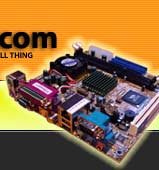|  | September 05, 2017
Choosing the right DC-DC PSU August 27, 2015
AMD's Project Quantum August 13, 2015
The Redstone PC is the ultimate Mini-ITX Minecraft Machine October 09, 2014
The "Restomod TV" April 09, 2013
Installing NAS4Free February 28, 2013
Building an XBMC 12 Home Theatre PC January 25, 2011
XBMC Guide updated to version 10.0 August 06, 2010
Building a Green PC February 15, 2010
Building an ION powered HTPC with XBMC October 10, 2008
The "Cambridge Autonomous Underwater Vehicle 2008" |
|  | | | September 12, 2008
"Florian", the DVD burning robot September 05, 2008
The "i-EPIA" May 22, 2008
The "GTA-PC" April 14, 2007
The "Digg" Case January 19, 2007
The "ITX-Laptop" December 07, 2006
The "Tortoise Beetle" October 02, 2006
The "DOS Head Unit" August 31, 2006
The "Janus Project" August 05, 2006
The "Leela PC" June 26, 2006
Nano-ITX in a Football May 17, 2006
The "EPIA Alloy Mod" April 11, 2006
Neatorama's Collection of Case Mods February 18, 2006
The "Rundfunker" October 24, 2005
The "ITX TV" October 06, 2005
The K'nex-ITX August 05, 2005
The "Waffle Iron PC" July 21, 2005
The "Supra-Server" July 18, 2005
The "Mega-ITX" July 07, 2005
The "Encyclomedia" May 25, 2005
The "Accordion ITX" |
|  | | | May 16, 2005
The "FileServerRouterSwitch" May 15, 2005
The "Mini Falcon" May 13, 2005
The "Bender PC" May 11, 2005
The "BBC ITX B" May 10, 2005
The "Frame" April 20, 2005
The "Jeannie" March 09, 2005
The "Cool Cube" January 30, 2005
First Nano-ITX Project? January 17, 2005
The "iGrill" January 15, 2005
The "Gumball PC" December 15, 2004
The "Deco Box" December 03, 2004
The "TERA-ITX" October 06, 2004
The "Coealacanth-PC" September 17, 2004
The "Gramaphone-ITX-HD" August 26, 2004
The "C1541 Disk Drive ITX" August 25, 2004
The "SEGA-ITX" August 13, 2004
The "Quiet Cubid" August 06, 2004
The "BMWPC" July 14, 2004
The "Moo Cow Moo" July 02, 2004
The "Mini Mesh Box" Full alphabetical archive on right hand side of page... |
|
|
Travla C137 Mini-ITX Case Review
Posted on October 8, 2003
Introduction
Casetronic, based in Fremont, California
with close links to Taiwan, design and manufacture electronic
enclosures and passive electronic components, and supply
various PC
cases. Travla is a new brand created
by Casetronic to supply a range of quality Mini-ITX
enclosures to the market.
Specifications
• Model No: Travla C137
• Case dimensions: 68.58mm(H) x 254mm(D) x 322.58mm(W)
• Main board size: Mini-ITX (170mm x 170mm) and Micro-ATX
• Compatible EPIA motherboards: Classic EPIAs, EPIA
V, EPIA M
• Construction: Lightweight Aluminium / Cold Rolled
Steel
• 1 x Laptop style 2.5" HDD or Traditional 3.5" HDD
• 1 x Compact Flash space
•
1 x Slimline Optical Drive bracket
• 2 x Additional front mounted USB 2.0 ports
• External AC Adapter: AC 100~240 V Input, Output DC 19V, 4.73A
• Internal DC-DC Converter
The Travla C137
The Travla C137 is a classic pizza box format
case, with a solid industrial styling. Construction
is of aluminium and cold rolled steel,
with
an aluminium front held on by 4 small hex headed screws. There
is a slot for a compact flash reader to sit behind on the
front left, and a single power button on the right - next
to LEDs for hard disk activity, and power.
More than adequate venting is provided, on
both sides and in two rows along the top of the case. This
will come in handy if the C137 is used with a compatible
P4 motherboard.
At the rear of the case
there is a cut out for an I/O panel, a removable panel
above that for additional firewire and USB sockets (as
provided with the EPIA M motherboards) and 2 PCI slots
- this is the only mainstream Mini-ITX case to date supporting
VIA's 2 Slot PCI Riser card. The top of the case is held
on by two easily removed thumbscrews.
A
socket attached to the back of the case takes 19V DC from
the supplied
universal
PSU. This is fed into a DC-DC converter at the front
of the
case, which turns this into the various 3.3V, 5V
and 12V supplies that the motherboard needs. Being 19V,
you won't see this case used as the basis of many vehicle-based
PCs.
The PSU is available
in 90W and 120W versions. It has a small cooling fan
(you can see the grille on the end of the power "brick").
In use this isn't very noticable. The top of the plug has an
LED attached to indicate power, which is quite snazzy. Don't
put it in the bath when the green light is on.
|
|







